Restaurant SEO Strategy: How to Rank #1 and Grow Your Restaurant in 2026
A strong restaurant SEO strategy can be the difference between a full dining room and empty tables. Whether you operate a single neighborhood restaurant or a fast-growing multi-location brand, your customers discover you the same way — through Google, Google Maps, local search, voice assistants, and now AI platforms like ChatGPT, Perplexity, Gemini, and Bing Copilot.
What does a truly effective SEO strategy look like for both single-location restaurants and multi-location brands in 2026?
In 2026, visibility depends on more than just keywords and basic on-page SEO. Diners expect accurate information, fast mobile experiences, compelling menus, strong reviews, and consistent branding across every search platform. For multi-unit brands, the challenge is even greater: every location must independently rank, build reputation, and win local visibility in its own market.
The problem? Most restaurant websites address only a portion of SEO — usually on-page content — while overlooking critical components like local SEO, technical performance, off-page authority, user experience, and AI search optimization. Website builders and cookie-cutter restaurant platforms often make this worse by limiting the level of control required for real SEO success.
At The Digital Restaurant, we specialize in helping both independent restaurants and multi-location brands grow through a complete, modern SEO strategy. This guide breaks down every essential component of restaurant SEO — local, on-page, technical, UX, content, off-page signals, and AI search — so your restaurant can rank higher, attract more customers, and create consistent growth across all locations.
If you want to increase visibility, improve your online reputation, and stay competitive across every search platform in 2026, this guide will show you exactly how to build a winning restaurant SEO strategy.
Core Elements of a Restaurant SEO Strategy
Here is a break down of the core elements of SEO:
| SEO Element | Description | Examples |
|---|---|---|
| Local SEO | Optimizes a business’s online presence to attract more customers from local searches. | Google Business Profile optimization, local keywords, NAP consistency |
| On-Page SEO | Focuses on optimizing individual web pages to rank higher in search engine results and earn relevant traffic. | Content optimization, title tags, meta descriptions |
| Technical SEO | Deals with the website’s backend and infrastructure to improve crawling and indexing. | Site speed, mobile-friendliness, XML sitemaps |
| Off-Page SEO | Involves activities outside of the website aimed at improving search engine rankings. | Backlink building, social media marketing, influencer outreach |
| Content SEO | Focuses specifically on content strategy and creation, including keyword targeting. | Keyword research, content quality, content updates |
| User Experience (UX) SEO | Covers overall user experience, influencing SEO performance through navigation, load speed, and accessibility. | Website navigation, page load speed, user engagement metrics |
| AI Search SEO / Emerging SEO | Visibility in generative and conversational AI engines. | Structured data, Conversational query, AI snippet s, AI-indexed content |
Lets discuss each SEO element in details:
Local SEO
Local SEO is one of the most important pillars of restaurant marketing because most diners search with local intent — “pizza near me,” “best sushi open now,” “brunch in Naperville,” etc. When someone is ready to dine or order, Google’s Map Pack, local results, and AI-generated answers determine which restaurants appear first.
Strong Local SEO ensures your restaurant shows up at the exact moment customers are ready to visit, order, or make a reservation.

Below is a deeper, restaurant-specific breakdown of each Local SEO component.
Google Business Profile Optimization
Your Google Business Profile (GBP) is often the first impression customers see. A fully optimized GBP increases visibility in Maps, “near me” searches, voice/AI search, and SGE-style AI answers.
Key steps for restaurants:
- Set the correct primary category (e.g., “Italian Restaurant,” “Sushi Restaurant”).
- Add secondary categories: Delivery, Takeout, Catering, etc.
- Upload 50–100 high-quality photos: dishes, dining room, bar, outdoor seating, staff.
- Add menu items, popular dishes, and detailed attributes (vegan options, parking, reservations).
- Update hours weekly — including holiday hours and special event hours.
- Post weekly specials, events, and promos through Google Posts.
- Track clicks from GBP to your website/ordering system using UTM parameters.
For multi-location restaurants, each location needs its own optimized GBP with location-specific photos, details, and updates.
Local Keyword Targeting
Your restaurant should target the phrases diners use when searching nearby.
Examples:
- “Best taco restaurant in Schaumburg”
- “Brunch near Oak Brook”
- “Order pizza online Chicago Ridge”
- “Thai food open now near me”
- “Catering in Darien IL”
Your website and location pages should naturally include:
- City names
- Neighborhoods
- Landmarks
- Popular menu items
- Conversational phrases (“open now,” “near me,” “late-night food”)
This helps search engines match your restaurant with real-world diner intent.
NAP Consistency (Name, Address, Phone)
Google cross-checks your restaurant’s Name, Address, Phone number across the internet. Inconsistencies (Suite vs Ste., different phone lines, missing street numbers) can lower your local rankings.
Ensure NAP is identical across:
- Website
- Google Business Profile
- Yelp
- Facebook/Instagram
- TripAdvisor
- DoorDash, Uber Eats, Grubhub
- Local directories & citations
For brands with multiple locations, maintain a master NAP sheet to keep everything consistent.
Local Link Building
Local backlinks signal authority and help your restaurant outperform competitors in local search.
High-value link sources:
- Local food blogs & influencers
- City magazines and local newspapers
- Community event websites
- Local charities, festivals, and sponsorships
- Partnerships with breweries, wineries, farms, or suppliers
- “Best Of” lists and restaurant roundups
Even brand mentions without links help strengthen local authority and show Google your restaurant is part of the local community.
Customer Reviews Management
Reviews influence both search rankings and customer decisions.
Best practices:
- Encourage reviews after dine-in and online orders.
- Respond to every review within 24–48 hours.
- Use location-based keywords in responses (“Thanks for visiting our Schaumburg location!”).
- Apologize + fix issues professionally in negative reviews.
- Share top reviews on social and your website.
Restaurants with higher ratings and consistent responses tend to rank better in the Map Pack.
Local Content Creation
Creating content tied to your city, neighborhood, and local events strengthens both SEO and community relevance.
Examples of high-performing local content:
- “Best brunch in ___” landing pages
- Neighborhood/local area guides
- Pages about seasonal specials or events
- Blog posts related to festivals, sports events, or holidays in your city
- Stories about your chef, local sourcing, or community involvement
Local content also drives more engagement, links, and mentions — powerful signals for Local SEO.
Local Schema Markup
Structured data helps Google understand your business and improves eligibility for rich results, AI-generated answers, and local visibility enhancements.
Important restaurant schema types:
- Restaurant / LocalBusiness schema
- Menu & MenuItem schema
- AggregateRating & Reviews
- OpeningHoursSpecification
- Geo coordinates
- Delivery & takeout options
- Reservation information
For multi-location brands, each location gets its own schema block with a unique @id.
Why Local SEO Matters for Restaurants
Local SEO directly impacts:
- Map Pack rankings
- Online ordering volume
- Reservation bookings
- Foot traffic
- Visibility in AI-generated search results
- Brand awareness within the local community
For restaurants, Local SEO is not optional — it’s the foundation of discoverability, revenue, and long-term growth.
Local SEO for Multi-Location Restaurants
Local SEO becomes even more important — and more complex — when a restaurant brand has multiple locations. Google treats each location as its own business entity, meaning every store needs to establish its own relevance, trust, and local authority.
Multi-location brands must balance brand consistency with location-level uniqueness to rank strongly in each market.
Read the full guide:
Local SEO for Multi-Location Restaurant Brands – The Complete 2026 PlaybookKey requirements for multi-location Local SEO:
1. Individual Google Business Profiles (GBPs)
Every location needs:
- Its own verified GBP
- Location-specific photos and details
- Accurate hours
- Ordering/reservation links with UTMs
- Independent review responses
This prevents ranking conflicts and ensures Google understands that each store serves a different geographic market.
2. Dedicated, Optimized Location Pages
Each location should have a full landing page that includes:
- Name, address, phone (NAP)
- Hours of operation
- Menu links
- Ordering/reservation buttons
- Embedded Google Map
- Localized content (neighborhood, nearby landmarks)
- Cross-links to nearby locations
Thin pages with only an address and phone number rarely rank well.
3. Centralized NAP Control
With 5–50+ locations, inconsistencies multiply quickly.
Maintaining a master NAP dataset ensures:
- Same formatting
- Correct phone numbers
- Consistent URLs
- Unified naming conventions
- Accurate listings across delivery partners and directories
This prevents Google from suppressing rankings due to conflicting data.
4. Location-Level Reviews & Reputation
Google evaluates each store’s reputation separately.
That means one low-rated location can lose the Map Pack spot even if the rest of the brand has strong ratings.
A multi-unit strategy should include:
- Automated review requests
- Templates for responses
- Location-level monitoring and reporting
- Monthly sentiment analysis
5. Local Authority Signals for Each Store
Each location benefits from its own local mentions, such as:
- Local food bloggers
- Regional publications
- Sponsorships & community events
- Local social media creators
- Cross-promotions with local businesses
This helps build relevance and trust in each community.
6. Multi-Location Schema Markup
Each store should have its own:
- “Restaurant” schema
- Unique @id
- Geo-coordinates
- Ratings and reviews
- Menu links
- Delivery/reservation availability
This helps Google differentiate locations and improves AI-search visibility.
With NGAZE.AI, restaurants can manage every Local SEO essential — Google Business Profiles, reviews, NAP consistency, local landing pages, and AI search visibility — all from one dashboard. No developer required!
Perfect for single locations and multi-unit restaurant brands.
On-Page SEO
On-page SEO focuses on optimizing each individual page of your restaurant’s website so search engines can clearly understand its content, relevance, and intent. For restaurants, effective on-page SEO directly influences how well your menu pages, location pages, catering pages, and online ordering pages rank for high-intent local searches.
Below is a deeper, restaurant-focused breakdown of each essential on-page element.
1. Content Optimization for Target Keywords
Your content should match how diners actually search.
Examples of restaurant-specific keyword targets:
- “best Italian restaurant in Naperville”
- “vegan brunch in Schaumburg”
- “order pizza online Chicago Ridge”
- “Thai food near Oak Brook”
- “catering for 50 people near me”
Restaurant sites should naturally incorporate:
- Menu item keywords
- Cuisine type
- City/neighborhood names
- Search intent terms (“near me,” “open now,” “delivery,” “reservations”)
For multi-location brands, each location page should target its own unique keyword set based on city + cuisine + intent.
2. Title Tags & Meta Descriptions
These are the first elements users see in search results.
Well-optimized metadata increases click-through rate (CTR) and reinforces local relevance.
Title Tag Best Practices:
- Include the primary keyword + location + brand name
- Example: “Italian Restaurant in Naperville | Marco Roma Pizza”
- Keep it under ~60 characters
- Use proper casing for readability
Meta Description Best Practices:
- Summarize what makes your restaurant unique
- Include a call to action (Order Online, View Menu, Book Table)
- Keep it around 150–160 characters
- Add geo-specific context
Example:
“Authentic Neapolitan pizza in Chicago Ridge. View our menu, order online, or dine in today. Fresh ingredients, fast pickup, and local delivery.”
3. Header Structure (H1, H2, H3)
Headers help both search engines and users understand page structure.
For example, a menu page might include:
- H1: Menu – Marco Roma Pizza (Naperville)
- H2: Pizzas
- H2: Pastas
- H2: Salads
- H2: Desserts
- H3: Individual menu items (optional)
Location pages often follow:
- H1: [Cuisine] Restaurant in [City]
- H2: Location Info
- H2: Menu & Specialties
- H2: Order Online / Reservations
- H2: About This Location
Search engines reward properly structured content with better ranking and featured snippet eligibility.
4. Internal Linking
Internal links help guide diners and search engines through your website.
Examples for restaurants:
- Home → Menu
- Menu → Online Ordering
- Location Page → Catering Page
- Blog → Featured Menu Items
- Blog → Location Pages
- Location Pages → Nearby Locations
Internal linking also:
- Reduces bounce rate
- Helps distribute ranking authority
- Makes it easier for AI search to understand your site structure
For multi-location brands, cross-link nearby or sister locations to strengthen overall domain authority.
5. Image Optimization
Restaurants rely heavily on images (food, ambience, interior shots).
Poorly optimized images slow down page speed and hurt rankings.
Best practices:
- Use next-gen formats (WebP)
- Compress images without losing quality
- Use descriptive alt text:
- “Margherita pizza – Marco Roma Naperville”
- “Outdoor patio seating – Chicago Ridge location”
- Use meaningful file names:
grilled-salmon-naperville.jpg
- Add structured data when relevant (MenuItem schema)
High-quality, optimized photos improve both SEO and conversions.
6. URL Structure
SEO-friendly URLs are clean, descriptive, and consistent.
Examples:
/menu//order-online//catering//locations/naperville//locations/oak-brook/
Avoid:
- Long URLs with parameters
- URLs containing dates
- Using
/location1/or vague paths
For chains, use a unified structure:/locations/city-location-slug/
This helps Google index locations correctly and prevents cannibalization.
7. Content Quality & Relevance
Every page must deliver value and match search intent.
For restaurants, valuable content includes:
- Detailed menu descriptions
- High-quality food photos
- Reasons people choose your restaurant
- Local relevance (landmarks, neighborhood mentions)
- FAQs (parking, seating, dietary options, hours)
- Updated seasonal items or specials
- Accurate ordering/reservation details
Avoid thin content — Google rewards pages that provide real substance and solve the user’s query.
Why On-Page SEO Matters for Restaurants
On-page SEO is fully within your control, and it determines how well your menu pages, location pages, and ordering pages rank.
Improving on-page SEO can instantly boost your visibility for local “ready-to-eat” searches, improve user experience, and increase conversions.
Technical SEO
Technical SEO ensures your restaurant’s website is fast, mobile-friendly, crawlable, and structured in a way that search engines can easily understand. Strong technical foundations improve rankings, reduce bounce rates, and create a smooth user experience—especially important for diners browsing on mobile, trying to view your menu, or placing an online order
Below is a restaurant-specific, in-depth breakdown of the key technical SEO elements.
1. Website Speed & Core Web Vitals
Restaurant websites often load slowly due to large images, menu PDFs, sliders, or third-party widgets.
Core Web Vitals to optimize:
- Largest Contentful Paint (LCP): Should load in under 2.5 seconds
Optimize hero images, menu images, and banner sections. - First Input Delay (FID) / Interaction to Next Paint (INP):
Make sure buttons like “Order Online,” “Menu,” “Call Now,” and “Reservations” respond instantly. - Cumulative Layout Shift (CLS):
Avoid shifting elements—especially menus, buttons, and pop-ups.
Restaurant-specific optimizations:
- Compress all images (WebP preferred)
- Lazy-load menu section images
- Avoid PDF menus; use interactive HTML menus instead
- Replace heavy scripts or sliders with optimized components
- Minimize booking/ordering widget scripts
2. Mobile Optimization
Most restaurant traffic is mobile—often 70–85%.
Google’s Mobile-First Index means your mobile site is treated as the primary version.
Key mobile UX elements for restaurants:
- Click-to-call button visible on all pages
- Sticky “Order Online” or “Reserve Table” button
- Easy-to-read digital menu (no pinch-zoom)
- Scannable location info (hours, address, directions)
- Fast loading within poor cell reception zones (parking lots, street corners)
Ensure all locations and menu pages are fully responsive across devices.
3. Crawlability & Indexing
Search engines must be able to discover and index all important pages, especially:
- Menu pages
- Location pages
- Order online pages
- Catering pages
- Blog posts
- About, contact, and FAQ pages
Technical best practices:
- Submit XML sitemap to Google Search Console
- Proper robots.txt rules (don’t block menu or location URLs)
- Fix broken links (404 errors)
- Remove or noindex duplicate pages
- Ensure that location pages are NOT hidden behind JavaScript-only rendering
For multi-location brands:
- Avoid having all locations share one “/locations” page without individual subpages
- Each location must be indexable and discoverable
4. Secure Website (HTTPS)
Google gives preference to secure websites.
Restaurants must use SSL certificates for:
- Main domain
- Subdomains (order.example.com, locations.example.com)
- Any third-party ordering integrations (to avoid mixed-content warnings)
This protects online transactions, reservations, and user trust.
5. Structured Data (Schema Markup)
Structured data helps Google understand what each page represents—and is crucial for restaurants.
Important schema types:
- Restaurant / LocalBusiness schema
- Menu & MenuItem schema
- OpeningHoursSpecification
- AggregateRating & Reviews
- FAQPage schema
- GeoCoordinates
Benefits:
- Rich results in search
- Better “Menu highlights” in AI-generated answers
- Enhanced visibility in voice search (“Best sushi near me”)
- Improved local ranking signals
For multi-location restaurants:
- Each location needs its own structured data block with a unique @id
- Location schema should link internally to the menu and reviews schema
6. URL Architecture for Multi-Location Brands
Clean, consistent URLs help Google understand your structure.
Best practice for chains:/locations/city-location/
Examples:
/locations/naperville//locations/chicago-ridge//locations/oak-brook/
Avoid:
/locations/location1/- URLs with query parameters
- Using the same content across multiple location pages (causes cannibalization)
7. Fixing Duplicate Content Issues
Common restaurant duplicate issues:
- Same menu copied across multiple location pages
- Same description used across the site
- Third-party ordering pages that mirror your menu
- PDF menus with identical titles/descriptions
- Subdomains that repeat main content
Solutions:
- Add unique local content for each location
- Use canonical tags when content must be duplicated
- Avoid hosting identical menus without differentiation
- Consolidate thin or duplicate blog posts
8. Image, Video & Media Optimization
Restaurants rely heavily on visuals—but large media slows load times.
Best practices:
- WebP for all photos
- Compress below 200KB when possible
- Lazy-load galleries
- Use short-form MP4 or WebM instead of autoplaying hero videos
- Add descriptive filenames
- Add alt text to support accessibility and SEO
High-quality visuals help diners decide faster—but they must load instantly.
9. Technical SEO for Online Ordering Pages
Online ordering pages often cause SEO issues because they:
- Load third-party scripts
- Render content using iframes
- Have thin content
- Duplicate content across locations
- Are hosted off-domain or on a subdomain
Best practices:
- Keep the ordering landing page on your domain
- Add schema markup for menu items
- Use canonicalization properly
- Preload key scripts
- Add internal links (“Order Online”) from every primary page
Optimize for speed—every second of delay reduces ordering conversions by up to 20–30%.
10. Accessibility (A11y)
Accessibility helps both UX and SEO.
Important elements:
- Alt text on all images
- Proper color contrast
- ARIA labels for buttons (Order, Reserve, Call)
- Keyboard navigation support
- Accessible menu structure
- Readable font sizes
This ensures all users—including those with disabilities—can interact with your website.
Why Technical SEO Matters for Restaurants
Technical SEO ensures your website is:
- Fast
- Mobile-friendly
- Crawlable
- Secure
- Structured properly
- Ready for local + AI search
A well-optimized technical foundation gives every other part of your SEO strategy a multiplier effect—helping your restaurant rank higher and convert better.
Off-Page SEO
Off-page SEO focuses on all the signals that happen outside your restaurant’s website but still influence how high you rank in Google’s Map Pack, organic search results, and AI-generated local answers. These signals demonstrate your restaurant’s authority, trust, and popularity within the local community.
For restaurants, off-page SEO is driven by real-world reputation—reviews, local press, community involvement, backlinks, and brand mentions.
Below is a deeper breakdown of each off-page SEO component.
1. Backlink Building
Backlinks (links from other websites to yours) remain one of the strongest SEO ranking factors.
For restaurants, the highest-value backlinks are local and relevance-based.
High-value backlink sources for restaurants:
- Local food bloggers
- “Best restaurants in ___” articles
- Local magazines & newspapers
- Tourism websites
- City or neighborhood business directories
- Local Chamber of Commerce
- Partner businesses (coffee roasters, breweries, farms)
- Event sponsorship pages (festivals, 5K races, farmers markets)
- University or corporate catering pages
Restaurant-specific linking ideas:
- Partner with local photographers or influencers who can link to your menu or location page
- Host tasting events for local creators or journalists
- Run collaborations with breweries, wineries, or dessert shops
- Provide menu images or quotes to media outlets looking for “top dishes” guides
Backlinks help Google verify that your restaurant is a legitimate, known, and trusted part of the community.
2. Local Citations & Directory Listings
Citations are mentions of your restaurant’s Name, Address, and Phone number (NAP) across the internet.
They help reinforce local authority and trust.
Core citation platforms:
- Google Business Profile
- Yelp
- TripAdvisor
- OpenTable / Resy (if applicable)
- DoorDash / Uber Eats / Grubhub
- Apple Maps
- Bing Places
- Yahoo Local
- Foursquare
Niche restaurant directories:
- Zagat
- Eater
- Infatuation
- Local city dining guides
- Industry-specific blogs
Every citation should match your exact NAP formatting from your website.
3. Online Reviews & Reputation Signals
Reviews influence both rankings and conversions.
Google uses review signals to determine local relevance and authority.
What matters most:
- Total number of reviews
- Average rating
- Review recency
- Review velocity (how often new reviews are added)
- Keywords inside reviews (“great sushi in Oak Brook”)
- Quality of responses
Restaurants should respond to reviews within 24–48 hours and use a consistent tone across locations.
Fast ways to grow reviews:
- Add QR codes to tables or takeout packaging
- Ask after online ordering
- Train staff to request reviews for great experiences
- Automate review requests through NGAZE or similar tools
AI search engines also pull review sentiment directly into their rankings and recommendations.
4. Social Media Signals
While social media doesn’t directly improve rankings, it massively strengthens brand visibility and off-page authority.
Restaurants with strong social presence gain more:
- Brand searches (a ranking factor)
- Local mentions
- Review activity
- Backlinks
- Community engagement
Platforms that matter most for restaurants:
- TikTok
- Google Business Profile (Google Posts)
- YouTube Shorts
- Pinterest (surprisingly strong for menu items)
Strong social signals include:
- Consistent posting
- Influencer collaborations
- User-generated content (UGC)
- Local hashtags (#NapervilleEats, #ChicagoFoodie)
- Viral or visually engaging menu items
When people engage with your brand off-site, Google sees that activity as a trust signal.
5. Influencer & Creator Collaboration
Local creators can generate:
- Backlinks
- Brand mentions
- Social shares
- Press opportunities
- Viral food moments
- High-intent traffic
Types of creators restaurants should work with:
- Local food influencers
- Neighborhood micro-influencers
- College campus creators
- Local lifestyle bloggers
- Travel and tourism creators
These collaborations also show up in AI-generated results (“top dishes” recommendations).
6. Press, Publicity & Community Relationships
Local press still carries huge ranking power.
Opportunities include:
- New menu launches
- Chef stories
- Charity or fundraising events
- Sponsoring school sports teams
- Opening new locations
- Seasonal promotions
- Holiday specials
- Local food competitions
Community involvement earns brand mentions that Google interprets as strong local authority signals.
7. Brand Mentions (Even Without Links)
Google uses both linked and unlinked brand mentions as signals of prominence.
Examples:
- Someone mentioning your restaurant in a local Facebook group
- A blogger referencing your brunch
- A YouTuber reviewing your pizza
- A TikTok creator tagging your location
- A local news article mentioning your name
AI search engines like ChatGPT, Perplexity, and Bing Copilot rely heavily on brand mentions when generating restaurant recommendations.
8. Off-Page SEO for Multi-Location Restaurants
For multi-location restaurant brands, off-page SEO must be location-specific.
Key elements:
- Each location should accumulate its own reviews
- GBP listings must be actively managed independently
- Each location needs its own local backlinks
- Press should highlight the specific branch when possible
- Social content should be tagged with the correct store
- Local citations must match the location-level NAP exactly
- Regional influencers can be assigned to specific stores
- Avoid mixing location reviews or listings (confuses Google)
You want each location to be the “best restaurant near me” in its own market—not overshadowed by the brand as a whole.
Why Off-Page SEO Matters for Restaurants
Off-page SEO builds the trust, authority, and credibility your restaurant needs to rank at the top.
Strong off-page signals help your restaurant dominate:
- Local map pack rankings
- Organic local search
- AI-generated restaurant recommendations
- Brand visibility and word-of-mouth
- Review-driven conversions
- Multi-location discoverability
It’s the foundation of real-world reputation in the digital space.
Content SEO
CContent SEO focuses on creating high-quality, relevant, and engaging content that attracts diners, answers their questions, and helps your restaurant rank higher in Google’s organic, local, and AI-driven search results. For restaurants, strong content improves discoverability, builds trust, enhances brand authority, and drives more orders, reservations, and foot traffic.
Below is a deeper, restaurant-specific breakdown of the key Content SEO components.
1. Create Content That Matches Diner Search Intent
Restaurant searches often fall into clear intent categories:
High-intent (ready to buy):
- “pizza near me”
- “best sushi in Naperville”
- “brunch open now”
- “order Indian food online”
- “happy hour in Oak Brook”
Research intent:
- “best restaurants for date night”
- “family-friendly restaurants near me”
- “gluten-free pizza options”
Planning intent:
- “catering for 50 people”
- “office lunch catering downtown Chicago”
- “private event room restaurants”
Your content should explicitly target these intents with:
- Location pages focused on GEO + cuisine
- Menu content optimized with item descriptions
- Catering and private dining pages
- Blog posts answering local dining questions
- “Best ___ in ___” content
2. Optimize Menu Content for Search
Most diners click Menu first.
Your menu page should be one of your highest-performing SEO assets.
Best practices:
- Use descriptive text—avoid only images or PDFs
- Add detailed descriptions with unique flavor notes
- Include keywords naturally (e.g., “wood-fired pizza,” “vegan pad thai,” etc.)
- Add alt text to food photos
- Add structured data for Menu and MenuItem
- Include internal links to online ordering pages
- Make the menu mobile-friendly and fast-loading
Avoid:
- PDF menus (slow, not crawlable)
- Images of the menu without text
- Duplicate menus across all locations without unique context
Better menu content = higher rankings + higher conversions.
3. Build High-SEO-Value Location Pages (Critical for Restaurants)
Location pages should not be thin or generic.
Your location pages should include:
- SEO-optimized H1 (“Italian Restaurant in Schaumburg”)
- Description of what makes the location unique
- Menu highlights
- Popular dishes
- Neighborhood references (landmarks, attractions)
- Reviews and testimonials
- Location photos
- Order Online / Reservation buttons
- FAQs (parking, seating, hours)
- Local schema markup
For multi-location brands, each page should contain unique content, not copy-paste text.
4. Create Localized Blog & Landing Page Content
Blog posts and landing pages help your restaurant show up for local, long-tail, and AI queries.
High-performing restaurant blog topics:
- “Best brunch in Naperville – 2026 Guide”
- “Top 10 dishes to try at Marco Roma”
- “Guide to Italian catering for corporate events”
- “Where to find gluten-free pizza in Chicago Ridge”
- “What to eat before a Cubs game – Local favorites”
Local event content:
- “Mother’s Day specials in Oak Brook”
- “Super Bowl catering in Schaumburg”
- “Valentine’s Day dinner in Naperville”
Search engines love fresh, hyper-local, event-driven content.
5. Use Content to Establish Brand Authority
Content should reinforce what makes your brand unique.
Examples of authority-building content:
- Chef interviews or stories
- Behind-the-scenes kitchen content
- Ingredient sourcing stories
- Signature dish spotlights
- Staff features
- Sustainability or local sourcing practices
- Restaurant history or brand roots
- Awards, media features, or recognitions
This content builds trust and strengthens your brand identity.
6. Frequently Asked Questions (FAQs) for SEO
FAQ content is incredibly valuable for both search and AI-generated results.
Add FAQs to:
- Menu pages
- Location pages
- Catering pages
- Private dining pages
- Home page footer
- Blog posts
Example restaurant FAQs:
- “Do you offer vegan or gluten-free options?”
- “Do you accept reservations?”
- “How does delivery work?”
- “Do you cater corporate events?”
- “Is parking available?”
- “Do you have outdoor seating?”
Use FAQ schema for enhanced search visibility.
7. Seasonal & Evergreen Content Strategy
Restaurants benefit from both seasonal and evergreen content.
Seasonal content:
- Holiday menus
- Summer patio dining
- Seasonal cocktails
- Local festivals
- Game-day specials
- Catering for holidays
Evergreen content:
- Menu categories
- Signature dishes
- About the chef
- Catering and private events
- Local dining guides
This combination keeps your content both relevant and long-lasting.
8. Content for Online Ordering & Conversion
Your content should support conversions—not just traffic.
Optimize:
- Online ordering landing pages
- Pickup vs delivery pages
- Catering order forms
- Private event inquiry pages
- Reservation pages
Make sure every page includes:
- Strong CTAs (Order Online, View Menu, Call Now)
- Mobile-friendly formatting
- Clear descriptions of options
- High-quality visuals
- Trust signals (reviews, ratings, awards)
9. Content for Multi-Location Restaurant Brands
Each location needs its own content ecosystem.
What each location page should include:
- City-specific copy
- Unique menu highlights
- Local reviews
- Local photos
- Neighborhood mentions
- Local FAQs
- Links to nearby sister locations
- Team introductions (optional)
Avoid using the same content across all location pages.
Why Content SEO Matters for Restaurants
Content is the foundation of restaurant SEO.
High-quality, locally relevant content helps you:
- Rank for high-intent local searches
- Increase online orders and reservations
- Improve map pack visibility
- Expand reach for multi-location brands
- Show up in AI-generated restaurant answers
- Build long-term authority and trust
- Drive community engagement and repeat visits
In the era of AI search and rapidly changing consumer behavior, great content is your restaurant’s competitive edge.
User Experience (UX) SEO
User Experience (UX) SEO focuses on how easily and enjoyably customers can navigate your restaurant’s website. Google rewards websites that deliver a fast, seamless, and intuitive experience—especially on mobile—because better UX leads to higher engagement, lower bounce rates, more conversions, and stronger search performance.
For restaurants, UX isn’t just about design. It directly impacts how quickly customers can view your menu, order online, call you, find your location, or make a reservation.
1. Make Key Actions Instantly Accessible
Your website should make the most important actions easy to find—especially on mobile.
Critical CTAs for restaurants:
- Order Online
- View Menu
- Reserve Table
- Call Now
- Get Directions
Best practices:
- Add a sticky mobile header with Order/Menu/Call buttons.
- Make CTAs consistent across all pages.
- Use clear, high-contrast buttons.
- Place the primary CTA above the fold.
If users hunt for basic actions, conversions drop dramatically.
2. Menu Experience: Fast, Scannable, and Mobile-Friendly
Your menu is one of the highest-trafficked pages—and poor UX kills conversions.
Best practices:
- Use an HTML menu, not a PDF.
- Structure menu categories clearly (Starters, Entrees, Pizza, Drinks).
- Include internal links directly to online ordering.
- Make prices & descriptions easy to scan.
- Use high-quality but optimized images.
- Avoid requiring pinch-to-zoom on mobile.
- Allow quick navigation between sections (anchors).
A great menu experience boosts both SEO and sales.
3. Fast Load Times Across All Devices
UX and speed are inseparable.
If a customer has to wait more than 2–3 seconds, they often leave.
Restaurant-specific optimizations:
- Compress food images
- Reduce heavy sliders or autoplay videos
- Lazy-load gallery images
- Preload core CTAs (Order, Menu)
- Limit third-party script bloat (ordering widgets, reservation embeds)
Speed improvements directly increase:
- Organic rankings
- Online orders
- Reservation completions
- Mobile engagement
4. Clear Navigation & Page Layout
Your website structure should guide customers logically.
Core navigation items for restaurants:
- Home
- Menu
- Order Online
- Locations
- Catering / Private Events
- About
- Contact
Best practices:
- Use simple labels—avoid clever names that confuse users.
- Include breadcrumbs on menus, blog posts, and location pages.
- Keep the header clean with no more than 6–7 links.
- Add a prominent footer with location addresses and hours.
Good navigation reduces bounce rates and helps Google understand your content hierarchy.
5. Consistent Branding & Visual Design
UX must reflect your restaurant’s brand identity.
Important elements:
- Colors and typography consistent across all pages
- High-quality photos of food, interior, and ambience
- Consistent button shapes and CTA styles
- Clean layout with intentional spacing
- Clear visual hierarchy for headers and sections
A polished design increases trust and helps customers feel confident in ordering or visiting.
6. Mobile-First User Experience
Most restaurant traffic is mobile, making mobile UX the top priority.
Mobile UX essentials:
- Sticky action bar (Order/Menu/Call)
- Larger tap targets for buttons
- Short, scannable content blocks
- No overlapping elements
- No pop-ups blocking menu content
- Clean, readable menus
- Quick access to hours, address, and map
Mobile UX directly affects both search rankings and sales performance.
7. Accessibility (A11y)
Accessible websites improve UX, SEO, and compliance.
Key accessibility elements:
- Alt text on all food and location images
- High-contrast color combinations
- ARIA labels for buttons (Order Online, Call Now, etc.)
- Keyboard navigability
- Font sizes readable on small screens
- Descriptive link text (“View Menu” instead of “Click here”)
Accessibility ensures everyone—including visually impaired users—can engage with your restaurant.
8. Reduce Friction in Ordering & Reservations
Any friction in ordering or booking causes drop-offs.
Fix common issues:
- Long forms
- Slow-loading ordering systems
- Confusing menu layouts
- Too many steps before checkout
- No guest checkout option
- Forced account creation
Best improvements:
- One-click “Order Again” (if supported)
- Clear delivery/pickup options
- Pre-filled location suggestions
- Simple reservation form
- Embedded map & address near CTAs
Removing friction boosts conversions dramatically.
9. UX for Multi-Location Restaurants
Each location’s UX must clearly guide customers to the right store.
Best practices:
- Dedicated landing page for each location
- Prominent address, hours, and phone
- “Choose a different location” dropdown or link
- Location-based ordering links
- Localized content (neighborhood, popular dishes)
- Cross-links to nearby stores
- “Near me” detection (if supported)
Confusing multi-location UX can lead to wrong orders, missed reservations, or high bounce rates.
Why UX SEO Matters for Restaurants
User experience directly influences:
- Search rankings
- Map pack visibility
- Order conversions
- Walk-in traffic
- Customer trust
- Time on site
- Reduced bounce rates
- AI-search selection
A fast, intuitive, mobile-friendly, and customer-centered UX helps your restaurant convert more visitors into diners.
AI Search SEO / Emerging SEO
Focus: Visibility in generative and conversational AI engines.
AI-driven search platforms—such as Google’s Search Generative Experience (SGE), ChatGPT, Perplexity, Bing Copilot, and Gemini—are transforming how diners discover restaurants. Instead of clicking through links, users increasingly ask conversational questions:
- “Where can I get the best sushi near me right now?”
- “Which pizza restaurant has gluten-free options in Naperville?”
- “What’s a good family-friendly Italian place in Schaumburg?”
- “Best brunch spots walking distance from Oak Brook Mall.”
AI search engines generate single-answer recommendations, meaning showing up in AI results can bring massive visibility—while being excluded means losing share to competitors.
AI Search SEO ensures your restaurant is included, recommended, and described accurately across emerging search platforms.
1. Optimize for Conversational & Question-Based Queries
AI search relies heavily on natural language.
Your website and location pages should include conversational phrasing such as:
- “We offer outdoor seating in the summer.”
- “Looking for vegan or gluten-free pizza? We’ve got both.”
- “Perfect for date nights, family dinners, and group celebrations.”
Include Q&A-style content:
- “Do you offer delivery?”
- “What are your most popular dishes?”
- “Where are you located?”
- “Do you take reservations?”
Adding these in simple, natural language increases the likelihood of being used in AI-generated answers.
2. Structured Data for AI Understanding
AI systems rely on structured data even more than traditional search.
Key schema types for AI search:
- Restaurant / LocalBusiness schema
- Menu schema
- MenuItem schema
- FAQPage schema
- Review & AggregateRating
- GeoCoordinates
- OpeningHours
- Delivery & takeout availability
AI engines also use:
- “What people say” from reviews
- Menu descriptions
- Photos
- Popular dishes and categories
- Local relevance signals
The more structured your data, the more confidently AI systems can reference your restaurant.
3. Strengthen Your Brand Mentions Across the Web
AI platforms pull from the entire internet, not just Google.
Priority sources include:
- Food blogs
- Review sites (Yelp, TripAdvisor, Google)
- Social media (Instagram, TikTok, Facebook)
- Local publications
- Influencer content
- Reddit and community forums
- Local lists like “Top 10 Restaurants in ___”
Unlinked brand mentions matter as much as linked ones in AI LLM training data.
Increasing your brand footprint increases your AI search visibility.
4. Improve Review Quality and Sentiment Signals
AI engines analyze:
- Review sentiment
- Key dish mentions
- Themes (service, ambiance, menu variety)
- Recent ratings
- “Popular items people talk about”
Restaurants with stronger review sentiment often appear first in AI-generated recommendations.
Enhance sentiment by:
- Responding quickly
- Highlighting popular dishes
- Encouraging detailed reviews
- Addressing negative feedback
- Using review requests strategically (after dine-in, post-order)
5. Build Content That AI Systems Prefer
AI tools reward:
- Detailed menu descriptions
- Strong location descriptions
- Clear “who it’s for” content
- Unique dishes and specialties
- Stories about your restaurant
- Neighborhood relevance
- Fresh content (updated menus, blog posts, events)
Examples of AI-friendly content:
- “Best brunch in ___” landing pages
- “Gluten-free pizza options in ___” articles
- “Top menu items at Marco Roma Pizza”
- Seasonal specials
- Holiday dining guides
The richer your content, the more AI systems trust your restaurant.
6. Optimize for “AI Result Pages” (AIRPs)
(Similar to SERPs but curated by AI models)
AI platforms often generate:
- Ranked lists (“Top 5 sushi spots near you”)
- Curated answers (“Try Marco Roma Pizza for family dinners…”)
- Recommendation summaries
- “Best dishes to try at…” callouts
To improve your inclusion:
- Add a clear “Why people love us” section
- Highlight best-selling dishes
- Mention awards or recognitions
- Showcase popular items in schema
- Use review snippets (“best deep dish in town”) within content
AI engines prioritize restaurants with strong identity signals.
7. AI Search SEO for Multi-Location Restaurant Brands
Multi-unit brands must optimize each location independently.
AI search best practices:
- Unique content per location
- Individual GBP listings
- Local dish highlights
- Local event content
- Local reviews and sentiment
- Location-specific schema
- Precise NAP across all directories
- Cross-link nearby locations
- City-specific FAQs
AI models prefer distinct, localized identities—not copy-paste pages.
8. Monitor & Track AI Search Visibility
Because AI platforms don’t provide analytics dashboards, restaurants must track visibility manually or via specialized tools.
Key items to monitor:
- Which dishes show up in AI suggestions
- Whether your brand appears in “Top ___ near me” lists
- How AI describes your cuisine or service
- Competitors mentioned alongside you
- Share of voice across AI platforms
- Accuracy of your hours, menu, and details
- Brand sentiment pulled into AI outputs
This is where you can elegantly plug in NGAZE:
Tools like the NGAZE AI Search Grader allow restaurants to scan ChatGPT, Gemini, Perplexity, and Bing Copilot to track brand visibility, menu mentions, competitor comparisons, and share of AI search.
Why AI Search SEO Matters for Restaurants
AI-driven platforms are reshaping how people discover restaurants.
Winning AI search visibility leads to:
- More high-intent diners
- Higher local authority
- Inclusion in curated AI recommendations
- Better visibility for premium dishes
- Stronger multi-location presence
- Competitive advantage vs slower-moving restaurants
- Accurate, consistent representation of your brand across platforms
AI Search SEO is no longer optional—it’s the next frontier of restaurant discoverability.
PRO TIP
Ensure Your Restaurant Website Passes Google’s Core Web Vitals Test
Get Pagespeed Insights for your restaurant website » https://pagespeed.web.dev
For restaurant websites, passing the Core Web Vitals test is essential to providing a seamless user experience and improving search engine rankings. Focus on optimizing page load speed, interactivity, and visual stability. Consider compressing images, leveraging browser caching, and minimizing JavaScript to enhance performance. A fast, responsive site not only satisfies Google’s ranking criteria but also keeps potential customers engaged, increasing the likelihood of conversions and repeat visits.
Conclusion: Turning SEO Into Real Restaurant Growth
Restaurant SEO is no longer just about ranking in Google—it’s about showing up everywhere diners search. From local map results and organic listings to AI-generated recommendations in ChatGPT, Perplexity, Gemini, and Bing Copilot, your restaurant must be discoverable across multiple search surfaces.
A complete SEO strategy includes:
- Local SEO: Optimizing Google Business Profile, reviews, citations, and location-level authority.
- On-Page SEO: High-quality content, optimized menus, metadata, and internal linking.
- Technical SEO: Fast load times, mobile-first design, structured data, and crawlability.
- Off-Page SEO: Brand mentions, backlinks, influencer coverage, and community involvement.
- Content SEO: Unique local content, menu optimization, dining guides, and seasonal pages.
- UX SEO: Clear CTAs, intuitive navigation, and a frictionless ordering/reservation experience.
- AI Search SEO: Preparing your website and brand for AI-driven discovery and recommendation engines.
When all of these work together, your restaurant doesn’t just rank higher—you gain more online orders, reservations, catering inquiries, foot traffic, and loyal diners.
Ready to Grow Your Restaurant’s Visibility?
If you’re ready to take your restaurant’s SEO to the next level, partner with The Digital Restaurant, the industry’s leading restaurant SEO and AI-search optimization agency.
You’ll get:
- A fully managed SEO program tailored to your restaurant
- Google Business Profile optimization for every location
- Technical and on-page SEO fixes that improve rankings fast
- Review and reputation management strategies
- Local content creation that drives high-intent diners
- Multi-location SEO setup (if applicable)
- AI Search Optimization across ChatGPT, Gemini, Perplexity & Bing
- Access to the NGAZE.AI marketing platform—our powerful suite of restaurant marketing tools
From local visibility to AI search discoverability, our specialized team can manage your entire SEO presence while you focus on running your restaurant.
Need Full-Service Restaurant SEO Support?
If you’re ready to take your restaurant’s SEO to the next level, partner with The Digital Restaurant as your specialized restaurant SEO agency. You’ll gain access to our powerful NGAZE.AI marketing platform — and our expert restaurant SEO team can manage everything for you, from local optimization to full-scale SEO execution.
Feeling overwhelmed by SEO? Let our restaurant SEO specialists handle it for you!
With NGAZE AI marketing tools and our comprehensive restaurant SEO services, we’ll help your restaurant rank higher, attract more local customers, and grow revenue — all while you focus on running your business.
👉 Ready to grow? Get in touch today.
Turn Restaurant Marketing Ideas
Into Predictable Growth
Successful restaurant brands don’t grow by stacking tactics.
They grow by running a connected growth system that turns visibility into orders – and first-time guests into repeat customers.
01
Diagnose visibility gaps
Identify where Google Maps, SEO, and AI search visibility are leaking demand today.
02
Fix conversion bottlenecks
Optimize website, menu, and direct ordering so web traffic actually turns into orders.
03
Scale repeat revenue
Use guest data (Email, SMS) to increase frequency, lifetime value, and predictable growth.
Built for serious operators – not one-off campaigns.
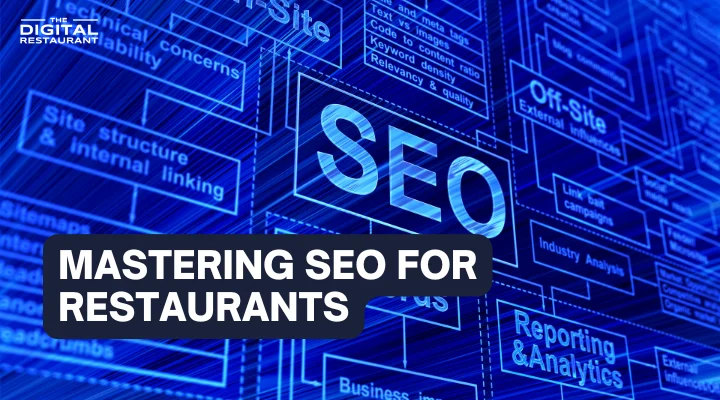
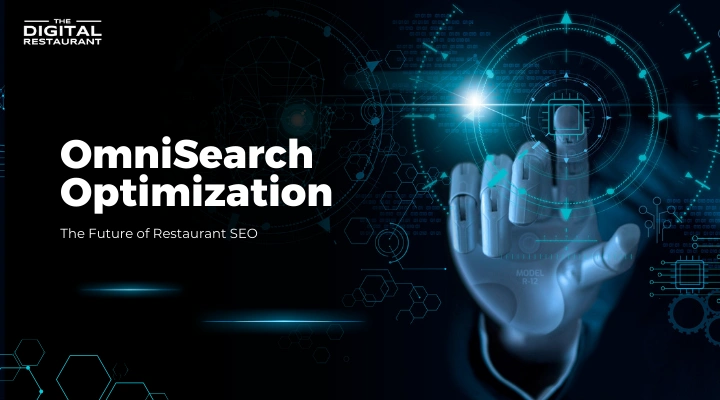
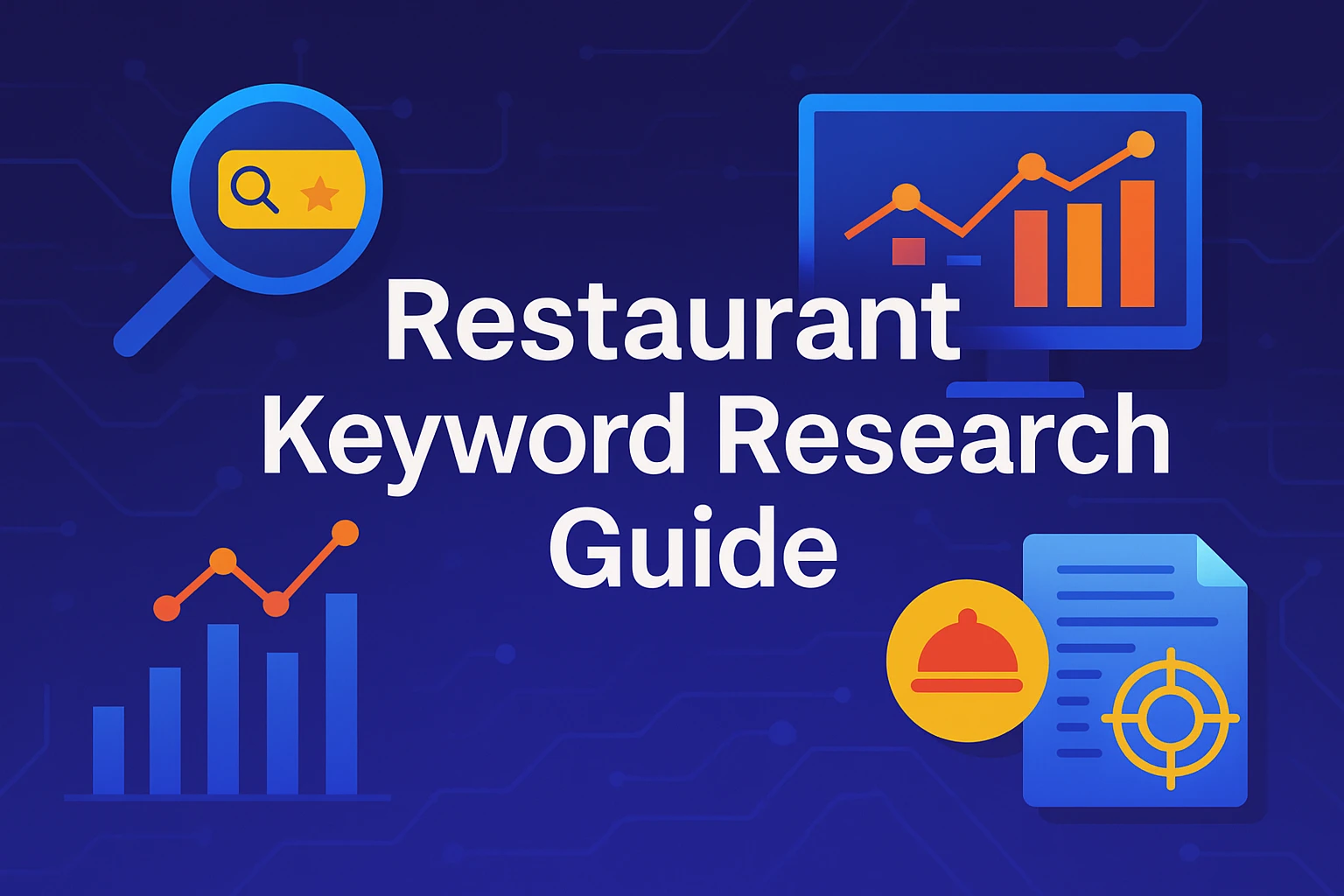
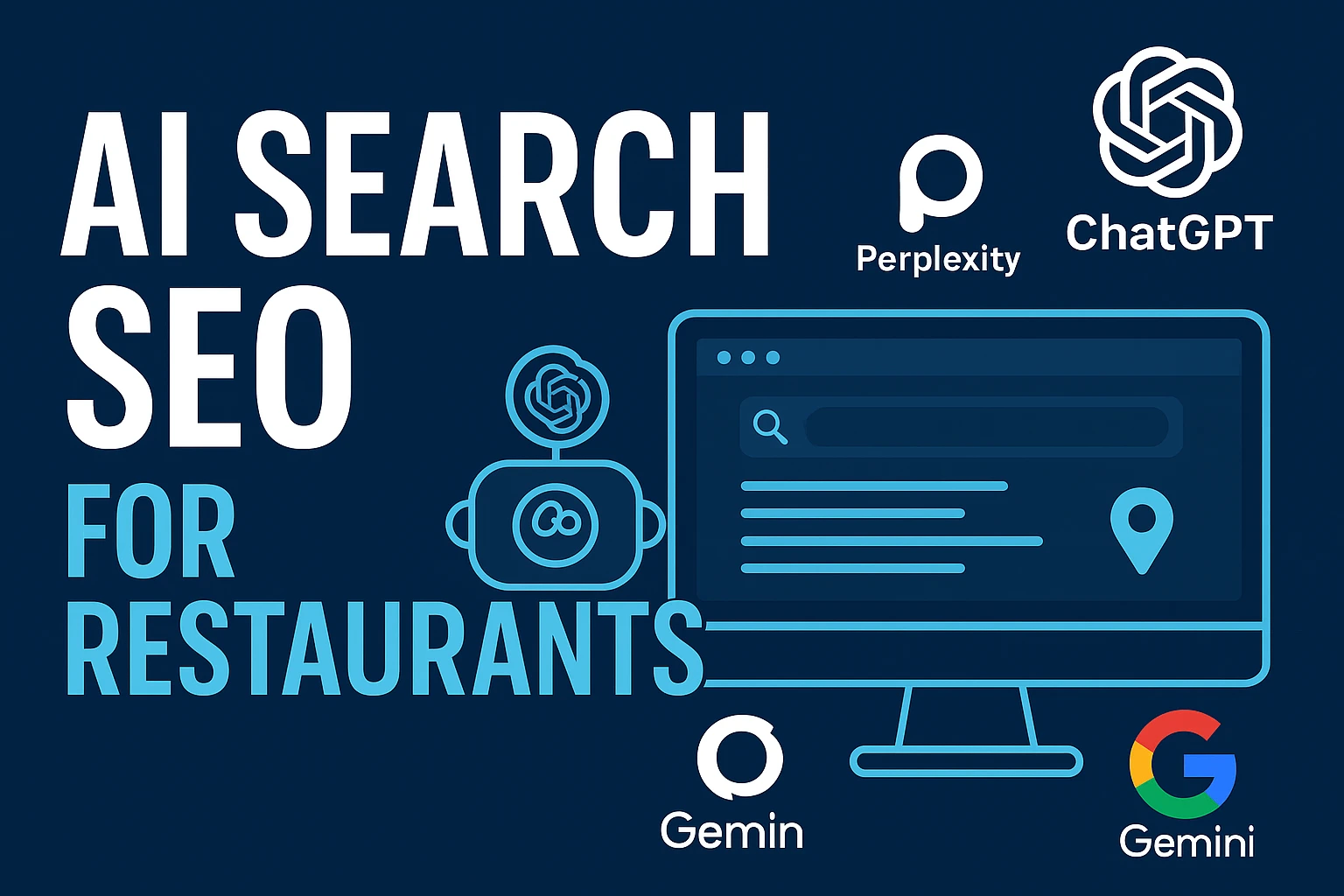
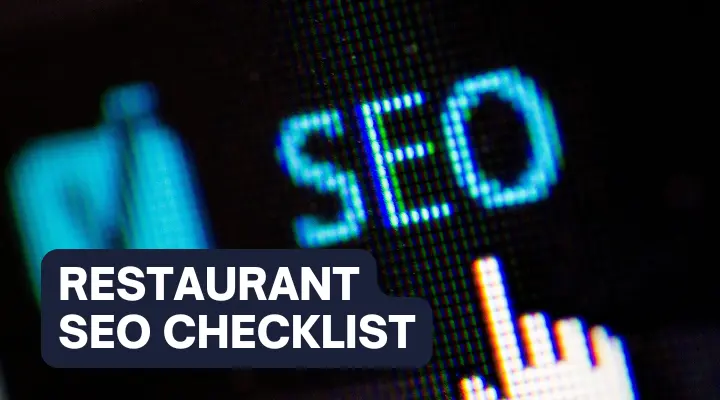
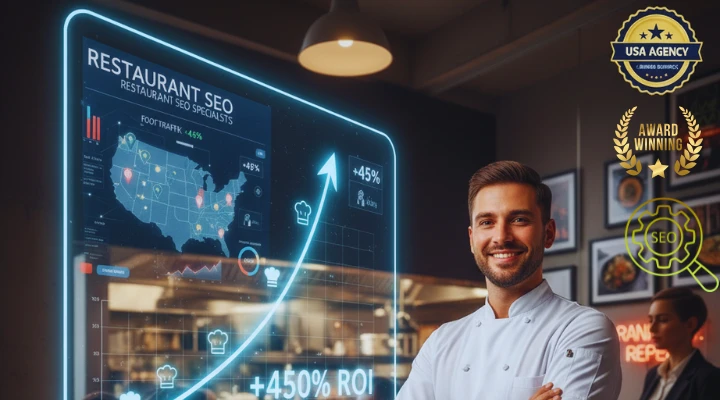
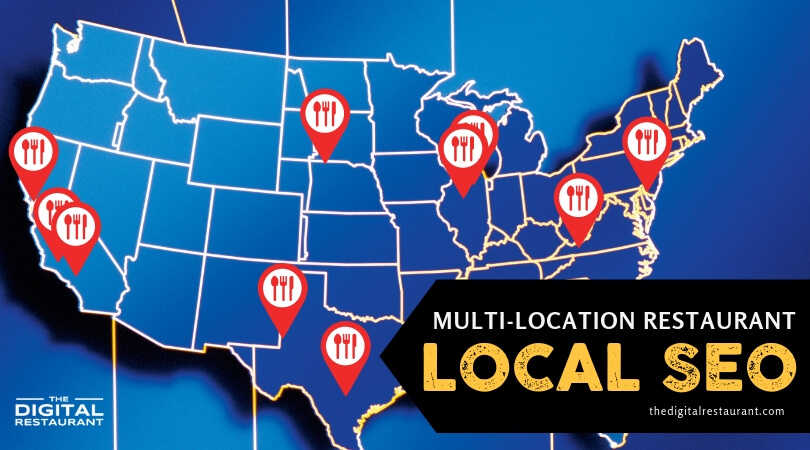


Leave a Reply